



The United Nations and its agencies hold international observance days (and in some cases weeks or even years) to promote global issues . There are 218 overall – many on familiar topics such as women, family, oceans, the environment. But there are some unexpected ones too - toilets, potatoes, tea, tuna, bicycles, seagrass.
And since 2017, bees too, with World Bee Day celebrated on 20 May to shine a spotlight on the importance of importance of pollinators, the threats they face, and their contribution to biodiversity and food security.
Bees are renowned as symbols of diligence and hard work. But, crucially, they are also responsible for pollinating around 75% of the world's leading crops, ensuring the production of fruits, vegetables, and nuts. Without them, global agriculture would suffer immensely. However, bees are under threat due to habitat loss, climate change, pesticide use, and disease. Their declining populations could have devastating consequences for ecosystems and food supply chains.
World Bee Day encourages governments, environmental organisations, and individuals to take action including, for example, planting bee-friendly flowers, reducing pesticide use, and supporting sustainable farming.
There are few better ways in societies of celebrating achievements and raising awareness than the images on our banknotes and coins. In the March issue of Currency News™, we looked at images of women on banknotes to celebrate International Women’s Day that month. This month, to mark World Bee Day, we asked around for examples of banknotes (including house notes) and coins that feature these saviours of our ecosystems.
Interestingly, there are several examples of bees on coins, but no current banknotes. This could be simply that we didn’t look hard enough, so please contact us with details of omissions – we are happy to stand corrected!
Bees are, however, particularly popular on specimen, or house, notes.
For example in 2013, Poland's state printing works, PWPW, produced a polymer test banknote on CCL Secure’s GUARDIAN™ substrate featuring a detailed illustration of a honey bee, including in the two windows.
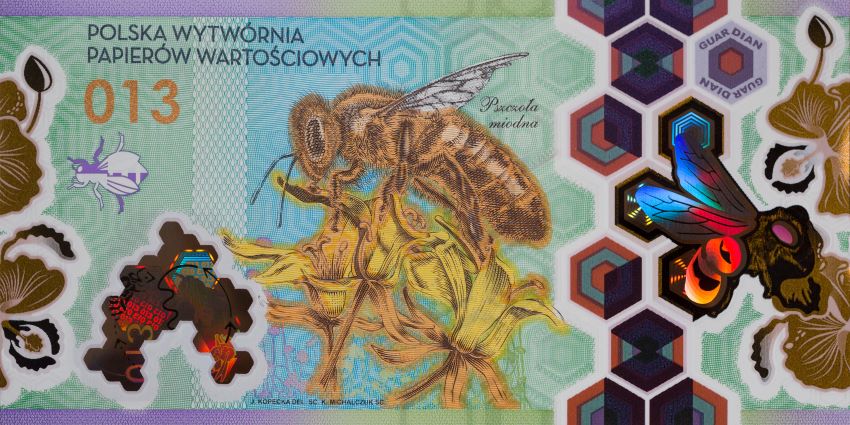
Another, more recent, house note from PWPW issued last year – Meadows – features a number of different insects, bees among them.
In 2022, KURZ produced a specimen note to demonstrate its KINEGRAM DYNAMIC® feature, with the stripe featuring bees and honeycombs.
.jpg)
Also in 2022, Giesecke+Devrient introduced the Green Banknote. The main security feature is a varifeye® ColorChange Patch from Louisenthal depicting a golden bee with an Animate-effect, creating a stunning 3D effect that gives the wings the appearance of motion. When the banknote is held against the light, the colour transitions from gold to blue.
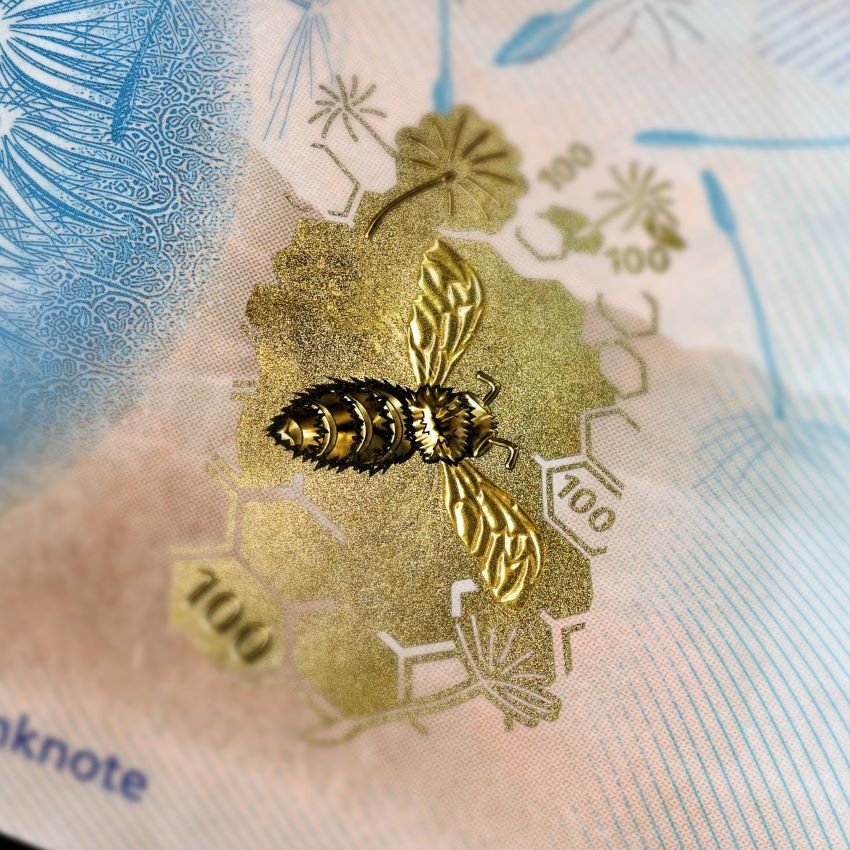
That same year, Crane Currency launched its Bug note to promote its RADIDS Detect machine- readable micro-optics thread. The note is an entomologist’s dream, replete with all sorts of six legged insects. They include, on the reverse, a bee.
Compared with banknotes, bees feature on a number of coins, both circulating and commemorative.
Bank al Maghrib issued a new series of Moroccan coins in 2011, the lowest denomination of which – the 10 cents – features a bee against a saffron flower.
.png)
In 2023, the South African Reserve Bank introduced a new coin series with a ‘deep ecology’ theme. The updated 10 cent coin features a detailed depiction of a Cape honey bee.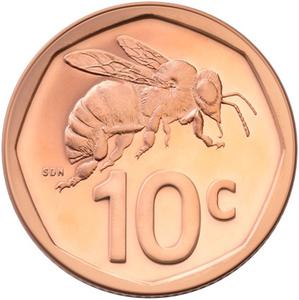
In the UK, the first £1 coins featuring the effigy of HM King Charles III’s entered circulation last year. The coins depict British bees, and are one of eight new designs that will appear on the nation’s coins, inspired by the flora and fauna of the British Isles.
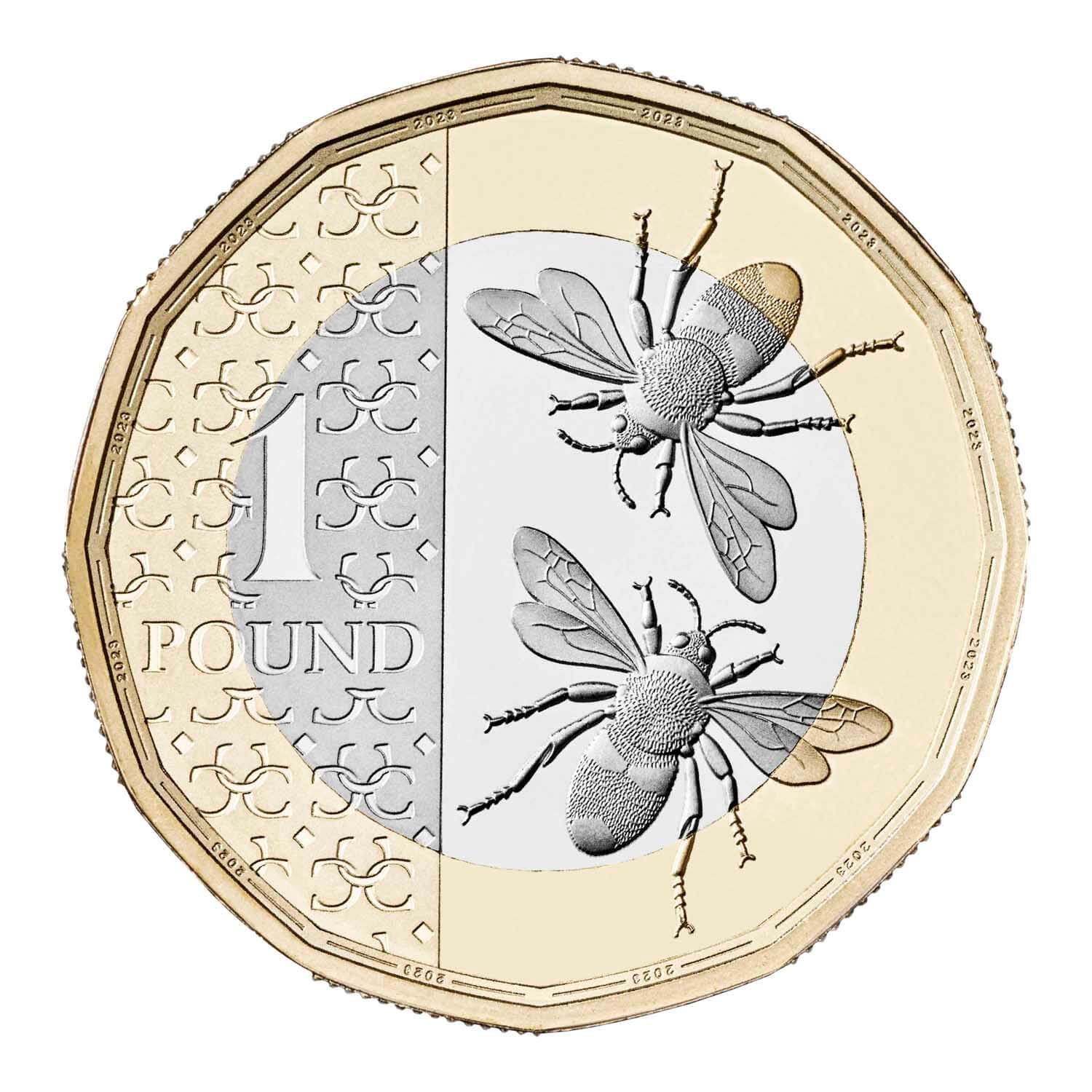
The A$2 Honey Bee coin was issued in 2022 as a joint collaboration between the Royal Australian Mint and the Honey Bee Industry Council to mark the 200th anniversary of the establishment of the bee industry in Australia. This industry is now estimated to contribute $4- 6 billion to the Australian economy, with around 20,000 registered beekeepers operating more than 640,000 hives, producing up to 30,000 tonnes of honey each year.
The reverse of the Honey Bee coin, which won the MDC Best Circulating Coin Award in 2023, has a central circle printed in a honey-coloured ink, which is protected by an intricated sculptured honeycomb. Surrounding the circle are engravings of two bees at work, along with examples of the plants they pollinate.
_7X5PoPf.jpg)
Flanders, in Belgium, has taken World Bee Day a step further with Bee Week, and in 2024 a €2.5 brass coin featuring a bee was issued by the Royal Belgian Mint and produced by the Royal Dutch Mint as part of the ‘Mow May’ campaign to encourage people to plant more pollen-producing flowers than grass in their gardens.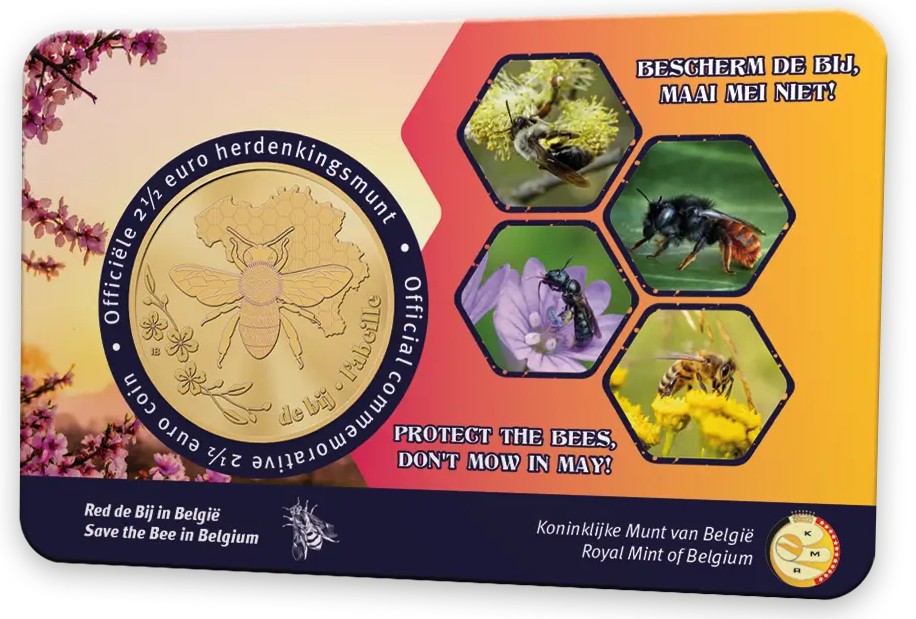
The reverse of the coin depicts a bee and stylised cherry blossoms, against a honeycomb map of Belgium in the background.
Malta also celebrated the bee last year, this time with a circulating commemorative €2 featuring its native Maltese honey bee. The reverse of the coin depicts an aerial view of the bee in the centre, with half a flower and partial honeycomb above and below, respectively.

In 2023, the German Bundesbank issued a commemorative €5 coin featuring a rusty-red mason bee as part of its ‘Wonderful World of Insects’ series. The same year, Austria issued a €5 coin featuring the ‘Bee Dance’ (apparently bees ‘dance’ to signal to their colleagues in the hive where pollen and nectar are plentiful).
Our thanks to those who responded to our call for examples of notes and coins to support this article. You are the ‘bees knees’ (for non-native English speakers, that’s slang for an excellent person).